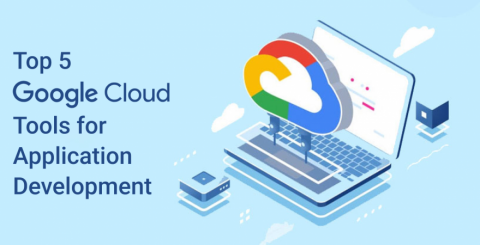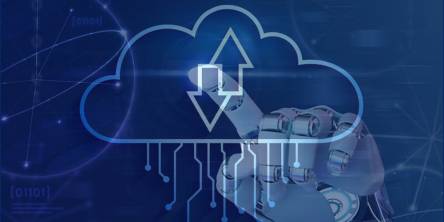Top 5 Google Cloud Tools for Application Development

Google Cloud is one of the market leaders in Cloud Computing services in the current market scenario. It competes with other Cloud Computing market leaders AWS and Microsoft Azure.
In this era of Cloud Computing, Google Cloud Platform offers cost-efficient, reliable, and secure Cloud Computing services to help companies to access their data and information in a better way.
However, Google Cloud Platform offers some amazing Cloud tools for developers to develop amazing Cloud applications that can help companies to manage their information and data more efficiently. These tools not only help companies to create, manage and deploy applications but also help them do the work without any hazards.
In this article, we will mention the top 5 Google Cloud tools for application development purposes that every Google Cloud development company should offer, as all these tools come with outstanding benefits that can help companies to grow.
1. Google Cloud Deployment Manager
Google Cloud Deployment Manager is one of the most efficient tools that you can use for Google Cloud application development purposes. It simplifies cloud management in a cost-efficient way. This highly advanced tool automates the creation and management of Google Cloud Platform resources, including computing, storage, networking and databases.
It allows users to write flexible templates and configuration files. Also, users can use these files and templates to create deployments along with a range of Google Cloud services, including cloud storage, cloud SQL, compute engine, etc. All these services are configured to work together to offer a convenient working experience to the developers.
It is an IaC tool of Google that creates the foundation as repeatable code. The tool can precisely utilize around three record types for every Google Cloud platform sending
- Arrangement Document in YAML
- Outline document
- Layout record in Python or Jinja.
At present, this tool doesn't cater to all Google Cloud devices and administrations, but it still works with the vast majority of centric Google contributions. However, one should remember that standard charges might get applied for any related administrations it sends.
2. Google Cloud Anthos
In short, it is a cloud-centric container platform that helps developers to run modern applications anywhere with a consistent scale.
It offers a hybrid container environment that allows users to use container clusters instead of cloud virtual machines (VMs) to fill the gaps between legacy software and cloud hardware. This tool also allows developers to use cloud technology, such as containers and Kubernetes clusters, on existing internal hardware without sacrificing the amazing benefits of cloud services.
It is one of the great tools of Google Cloud Platform as it gives companies a choice to deploy applications and migrate workloads between environments so that one can choose according to the requirements and preferences without compromising other benefits. This platform is primarily developed for enterprise use purposes so that they can manage and coordinate on-premises and cloud workloads. It is one of the most efficient container-container-as-a-service platforms that you can go for.
Remember that Google Cloud Anthos can only run on servers that can efficiently host Kubernetes clusters with the Google Kubernetes Engine. The features of this tool include monitoring, service management, a networking environment, Istio Service Mesh, centralized configuration management, consolidated logging, etc.
3. Google Access Transparency
Google Access Transparency logs help users to learn much more than Cloud audit logs. In short, this tool is representative of Google's long-term commitment to user satisfaction and user trust. Access Transparency logs record the actions that Google personnel take when accessing customer content. So, if you want to know about the actions, you can get the information with these logs that you will not get from Cloud audit logs. It offers increased transparency in data accessibility.
It enables the verification of cloud provider access. Access transparency has become a great matter of concern for cloud computing service users. This particular tool deals with that concern in an efficient way. It allows users to know how the cloud supplier handles the fundamental framework that supports their applications.
With this amazing tool, users can also utilize Google's inward logs that are related to their records. However, this specially developed tool works with six other Google administrations, including Compute Engine, Cloud Storage, App Engine, Persistent Disk, Cloud Key Management Service, and Cloud Identity and Access Management. This tool offers both the clients and suppliers a common platform to sort out their requirements and create a win-win situation.
4. Firebase Real-time Database
In short, it is a cloud-hosted NoSQL database that allows users to store and sync data between their users in real-time. With this development tool, data gets stored as JSON and synchronized in real-time to every connected client. This tool helps users to get updated with recent real-time data so that they can act according to the requirements.
It allows data-dependent users to access several features, including huge unstructured databases, fast improvement, etc. This tool is specially developed for portable web application advancements. This tool can be used with iOS, JavaScript SDKs, Android, and REST APIs. However, one should remember that this tool cannot deal with information in various leveled ways, and also, it is not ideal for a huge data load.
5. Google Cloud Firestore
It is one of the best choices to deal with cloud computing complexities. It allows developers to access a greater number of highlights as well as usefulness compared to Firebase. It is also a more suitable option for developing advanced applications as it is utilized for server-side improvement through Java, Python, Node.js, and Go SDKs.
This tool uses records that contain fields that allow developers to get guidance about genuine worth. It is also a NoSQL document database that allows users to store, sync, and query data from mobile and web applications without any hazards at a global scale.
Conclusion
Talking about Google Cloud development services, all of these tools are highly beneficial for cloud-based application development purposes. These tools simplify different dimensions of cloud application development, which allows developers to create, manage and deploy applications without any hazards on the Cloud Computing Platform. I hope this article was helpful to you.
Similar Articles
For modern businesses to thrive, ensuring the effective management of inventory stands has become vitally important. Inventory management stands as a cornerstone of success. And the emergence of the Internet of Things (IoT) has introduced a new era of connectivity and efficiency across diverse industries.
Do you know what the following e-commerce companies have in common: Amazon, Walmart, eBay, and more? All of these e-commerce companies' apps make use of Java. Java is decidedly among the leading choices of programming language for e-commerce applications because it offers a world of benefits; for example, since Java code can be run on any platform with a Java Virtual Machine (JVM), users of e-commerce apps made with Java can access the said apps on a variety of devices.
Nikola Tesla in 1926, once described what is now called a mobile phone as a telephone that can fit into one's “vest pocket.” As otherworldly as that idea was then, nearly a century later, the reality is even more astounding.
Given the staggeringly high amounts of data being generated worldwide every single day, it ought to come as no surprise that organizations often struggle to pick the right tools to help them effectively harness the potential of all their data.
Managing properties can be a difficult task with the right tools. Property owners must find and use the best property management software. It can be a long and tedious process as there are many options in the property management software market.
In the ever-evolving financial services landscape, industry challenges are numerous and complex. From stringent regulations to rapidly advancing technology and changing consumer expectations, financial institutions face many obstacles.
The human learning capability is a great resource for helping technology evolve and grow, breaking boundaries, and creating new ones. Emulating the ability of humans to learn at a gradual but retentive pace, Machine Learning is the latest power monster that is redefining human-machine interaction.
In the ever-evolving landscape of low-code development, Microsoft's Power Platform stands out as a powerful tool for building custom applications. In today's dynamic digital landscape, creating and managing web pages is no longer the exclusive realm of professional web developers
In the data-driven business world, where information is of utmost priority, organizations are increasingly turning to data warehousing and data marts to harness the power of their data. These data management solutions are pivotal in transforming raw data into actionable insights.









